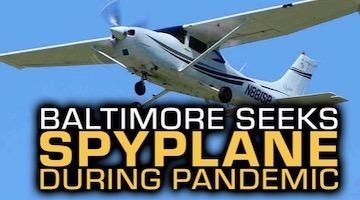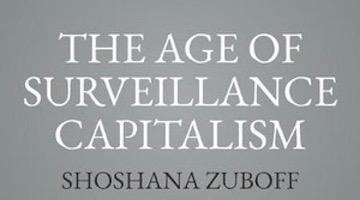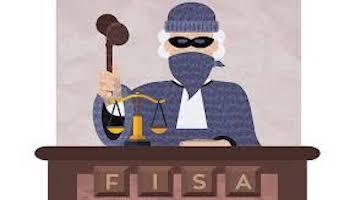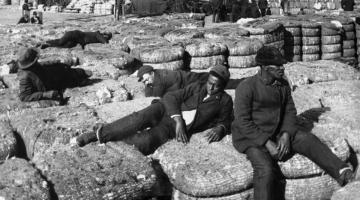This lawyers’ story inspires us to march forward against the forces of repression, oppression, and white supremacy.”
“The book provides a history of the struggles that the collective Guild has fought and continue to fight.”
Flint Taylor, a longtime Lawyers Guild member, is a founding member of the Peoples Law Office and author of The Torture Machine, Racism and Police Violence in Chicago[1].
Lawyers for the Left, (OR Books, 2019) by Michael Steven Smith, subtitled “in the courts, in the streets and on the air,” takes on the formidable task of highlighting the work, over the past six decades, of some 25 movement lawyers, most of whom were important members of the National Lawyers Guild. Drawing on his own experiences as a longtime Guild lawyer and dedicated socialist, and republishing many of the interviews that he and co-hosts Michael Ratner and Heidi Boghosian, conducted on their groundbreaking WBAI radio show Law and Disorder, (which is now broadcast on 130 stations nationwide and can be listened to at: lawanddisorder.org) Smith gives us what reviewer Ajamu Baraka called “an informative and inspirational insight into the minds of some of the most incredible public servants this country ever produced.”
First, a bit about Smith himself. Birthed in the 1960’s as a young Lawyers Guild attorney, Smith tells us that after reading Trotsky and Lenin, serving a term as a legal VISTA, and joining the Socialist Workers Party, he got his baptism of legal fire in Detroit with Guild stalwarts including Jim Lafferty, Buck Davis, Dick Soble, and Linda Mass, forming a movement law firm whose work was captured in Detroit Red Squad spying documents: “there is hardly an underground paper, liberation or left wing group of any kind in Detroit that at one time or another was not represented by the law firm.” In the early 1970s, he moved to New York City, and got himself expelled from the SWP for voicing his opinion that that the organization had become “very sectarian.” He worked for Pathfinder Press, Harlem Legal Services, then the Center for Seafarers Rights, before setting up a plaintiffs’ personal injury law practice with his activist wife Debby. Early on, Michael Ratner, who became a trusted friend and comrade, enlisted Smith to work on Guild Notes, and decades later, in 2000, the two Michaels, together with Heidi, who, served as NLG Executive Director from 1999 to 2014, launched Law and Disorder.
“There is hardly an underground paper, liberation or left wing group of any kind in Detroit that at one time or another was not represented by the law firm.”
Smith first brings us the Guild lawyers that he and his youthful Guild compatriots of the 1960s generation (including the author of this review) looked up to for inspiration and guidance: Arthur Kinoy, Bill Kuntsler, Haywood Burns, Ernie and Bill Goodman, Leonard Boudin, Ann Fagan Ginger, Victor Rabinowitz, and Lenny Weinglass to name some of the most prominent. About Kinoy, who was an inspirational speaker and remarkable Constitutional lawyer, Smith tells us, through an interview with Lafferty, the following inspiring story about the Guild going south and setting up an office during the civil rights movement:
“[Arthur] always tells the great story about how, at a 1963 convention of the Guild, he gets a phone call from Len Holt, an African American, one of the two lawyers in the South handling these cases. Arthur says to him, “Len, where are you?” And Len says, “The question is, Arthur, where are you? And why aren’t you down here in Mississippi with me?” And he came back into the convention, proposed to the National Lawyers Guild convention on the spot that we scrap everything else that we were doing, forget the agenda; the civil rights movement in the South is calling and we need to answer that call. And I’m proud to say we did.”
Smith tells us a humorous story about Bill Kuntsler who, along Lenny Weinglass, were the lawyers in the 1969 Chicago 8 conspiracy trial that arose from the police riot at the 1968 Democratic National Convention. Kunstler, who also represented numerous movement icons from the Attica brothers, Malcolm X, Stokley Carmichael (Kwame Toure) and Assata Shakur, to American Indian Movement leaders Russell Means and Dennis Banks, also later represented crime boss John Gotti on the question of whether he had the right to choose his own lawyer:
“[Bill] was invited out to dinner with Gotti and his crowd. Bill was asked at the restaurant if he would please make a toast. He rose from the table, glass in hand, and declared, “Here’s to crime.” The entire gathering sat stone silent staring at him. Bill then exited. After he left, they all fell out.”
“Where are you? And why aren’t you down here in Mississippi with me?”
Len Weinglass, less flamboyant, was a true lawyers’ lawyer, who took the hardest of cases -- Munia Abu-Jamal, The Palestine 8, the Cuban Five, Kathy Boudin -- and pursued them brilliantly. He (along with Susan Jordan of the People’s Law Office) pioneered the necessity defense. He is eulogized by Smith:
“[Len] will be remembered personally as a good, generous, and loyal friend, a gentle and kind person; politically as a great persuasive speaker, an acute analyst of the political scene, and a far-seeing visionary. Professionally, Len Weinglass will live on as one of the great lawyers of his time, joining the legal pantheon of leading twentieth-century advocates for justice along with Clarence Darrow, Leonard Boudin, Arthur Kinoy, Ernest Goodman, and William Kunstler.”
Smith also highlights the remarkable career of Haywood Burns, who served as Guild president, helped to found the National Conference of Black Lawyers, and was in the forefront of fighting against racism at home and apartheid in South Africa. He represented Dr. King during the 1968 Poor People’s Campaign, and was instrumental in organizing the defense of the Attica brothers after the 1971 prison rebellion. Smith tells of the tragic accident that took Haywood’s life at the height of his career:
“But such is the irony of history that, in Cape Town, South Africa, after the dust over the apartheid regime had settled, Haywood Burns … was killed by a truck running a stop sign. Haywood was attending a conference on democracy and international law and had recently heard Nelson Mandela speak. Wilhelm Joseph was there with him and told me, “It was not just hearing Mandela as a released prisoner, but hearing him speak as the head of state, that caused Haywood to reflect that it ‘was the happiest day of my life.’”
“Haywood Burns served as Guild president and helped to found the National Conference of Black Lawyers.”
Lawyers for the Left also tells the story of another Guild hero: Lynne Stewart. Lynne was a beloved community lawyer on Manhattan’s Lower East Side when she took on, with Ramsey Clark and Abdeen Jabara, the defense of blind Egyptian cleric Sheik Omar Abdel Rahman, who had been convicted of conspiring to blow up New York City landmarks. Smith, in his introduction, and Stewart, in her Law and Disorder interview, tell the disturbing story of how a press release from the Sheik that Stewart brought out of the Federal prison where the Sheik was incarcerated, escalated, in the post 9/11 hysteria, from a simple violation of prison regulations to a conspiracy to aid terrorism, an eight month trial where Osama Bin Laden’s photograph was constantly displayed to an anonymous jury, a conviction and a 28 month sentence that was overturned by a Second Circuit Court of Appeals panel that included President George Bush’s cousin, and a resentencing to 10 years, of which she served four, before being released, at the age of 74, because she was suffering from terminal cancer. Through it all Stewart, who received widespread support, showed unwavering courage and commitment to her principles, and, upon her release, she continued to fight injustice by organizing and speaking until she died three years later.
Through several of the remarkable NLG lawyers profiled in the book, the reader learns about many of the important legal and political struggles in which the Guild attorneys have played a prominent role. Abdeen Jabara, a Lebanese-American Guild lawyer from Detroit, tells of his more than 50 years of struggle for Arab and Palestinian rights in the most hostile of environments, including, in the late 1960s and early 1970s, the Guild itself. Margaret Ratner Kuntsler talks about her varied work in aid of movement struggles while raising two daughters, from advising and representing war resisters as part of the NLG Grand Jury Project, to representing, with her former husband Michael Ratner, Julian Assange and Wikileaks. The late Rhonda Copelin talks about being in the legal forefront of both the fight to defend abortion rights and in obtaining the landmark decision permitting the Alien Tort Claims Act to be utilized to sue foreign torturers who move to the United States.
“Lynne Stewart showed unwavering courage and commitment to her principles.”
Guild attorney Mara Verhedeen-Hillard, known for her outstanding work litigating mass defense and First Amendment cases, tells of the greater mission and role of her advocacy:
“And as important and critical as it is, as we stand to defend the Bill of Rights, that there are also larger issues, and that we want to keep the streets and the sidewalks and the parklands open, because all social change, all historical change in the United States that has made a difference for people, has come from below.
“It has come from popular movements and popular struggle, not because the politicians decide to give people rights, but because there is that feeling that the people are demanding them and that they are going to force it to happen. So that at the end of the day, we don’t see the issue being just, “do we get a judge on the bench to agree with us and that’s it,” it’s also making sure that there is space for people to be able to express themselves. In that way, we turn to our clients again and again to make sure that we are working both with our clients and with community organizations in service of their ultimate struggle.”
Jan Susler, who has been a stellar attorney at the People’s Law Office in Chicago for almost four decades, talks about her years in the early 1970s in law school which was populated predominantly by “rich white boys” and how the Guild helped to keep her sane. In the early 1980’s, she had an opportunity that altered the course of her career as a people’s lawyer:
“I met two of the then eleven Puerto Rican political prisoners, who opened my eyes to something I knew nothing about. I knew nothing about Puerto Rico being a U.S. colony, having been invaded, them resisting colonialism, I learned about international law, making colonialism a crime against humanity, and then I started traveling to the Puerto Rican community in Chicago and then to Puerto Rico. They really opened my world and what a gift they gave me, what a privilege it’s been for me.”
“I knew nothing about Puerto Rico being a U.S. colony.”
Her commitment led her to playing a key role in freeing those prisoners, starting in 1999, and culminating with the release of Oscar Lopez Rivera in 2017. With typical humility, she brushes off the accolades she has received for her work, pointing to the movement that fought for the prisoners’ freedom, and the “privilege” it has been to work with them for their freedom:
“Very few people ever get to meet people who are so committed to freedom and the freedom of their people, and it makes them very special that they were willing to risk life and limb and basically give up their children, their families, their careers for the freedom of their country. I think people in the U.S. understand who Nelson Mandela is and what he stood for and what he sacrificed, and what he meant for his country. These men and women are the same for the people of Puerto Rico.”
Charles Abourezk is a Lebanese- American lawyer, filmmaker, author, and chief justice of the Rosebud Sioux Tribal Court in South Dakota. He spent a great deal of time on the Pine Ridge Reservation as a community organizer in the early 1970s before he became a lawyer. He later made a movie about the American Indian Movement led protest at Wounded Knee called A Tattoo on My Heart: The Warriors of Wounded Knee 1973. He describes the seventy-one day protest that foreshadowed the Water Protector protests at Standing Rock:
“Wounded Knee was the site of the 1890 massacre in which almost three hundred American Indians from several different tribes were killed by the U.S. Army. They were surrounded and, essentially, murdered on that spot. By the 1970s, there had been a lot of racial discrimination and some racially motivated killings of Indian people, and in 1973 the American Indian movement returned and joined forces with the traditional people who had long been neglected on the reservation. They decided to engage in a protest—and they chose the site of the massacre at Wounded Knee to stage that protest.
“They set up a line there. The government, the FBI and the U.S. Marshals, along with [tribal chairman] Dick Wilson’s followers who were armed and called “the goon squad,” formed the other side of that line. The siege lasted seventy-one days. It was finally dismantled, and a number of people were prosecuted and so on as a result of that.
“At Wounded Knee, there were two Indian people killed, and one marshal wounded. The first fatality was Frank Clearwater. He was a medic who had just arrived within a few days, and he was shot in the head by a federal round as he was in the basement of the church there. The second was Buddy Lamont, who had been serving in the U.S. Army in Vietnam, and had come back and decided to go AWOL and fight for his people instead. Buddy was killed at about a thousand yards with a fairly large round. I think they said it was a .300 or something like that. Shot right in the chest. I think that was the beginning of the end of the protest, because that had been such a stark and overt killing of an Indian person, and they began to start to negotiate at that point.”
Abourezk also discusses the crushing poverty and rampant unemployment on the reservation, both then and now, and the restorative component of tribal court justice:
“These courts are very modern, but they also try to reflect traditional notions of justice; many courts have a traditional mediation diversion program, so they can refer people to elders and let them work out conflicts. This is a good thing, because in the Native American view, you can’t really have winners and losers. You have to restore the harmony or the balance within the tribe.”
“In the Native American view, you can’t really have winners and losers.”
With little doubt, the most entertaining interview is with NLG Lawyer and fabulous story teller Holly Maguigan, who cut her teeth as a public defender in Philadephia. With down to earth humor and compassion, she talks about how much she loved her PD job, before moving on to work with the bell weather Philadelphia NLG civil rights firm of Kairys and Rudovsky. She describes the racist police commissioner Frank Rizzo who later became Mayor, and the rampant and deadly police violence during his reign, including a raid on the Black Panther office where he personally oversaw the strip searching of all of its occupants on the street in the cold Philadelphia winter. She talks about the bribing of judges, and discusses her experience pioneering the battered woman defense. When her daughter was born, she named her Miranda, and tells a hilarious story about how one of her clients invoked his Miranda rights by telling his police interrogators “do you know who my lawyer is? Do you know what she named her baby?” She talks about the fears and rewards of being a criminal defense attorney, and gives the following advice about becoming a trial lawyer:
“I think you have to love gossip, and love stories. And love hearing stories and love hearing them more than once. And figuring out how to tell that story, how to enable the person to tell her or his own story, when he or she is able. Not everybody accused of crime is able to withstand the stress and actually tell it. . . . But I think it’s really, more than anything, it’s about liking people and wanting to see what you can do to help them extricate themselves from a problem.”
These are just some of the outstanding lawyers of and for the left whom Michael Smith profiles, and there are countless others, Guild members and not, including Michael Ratner, Heidi Bogoshian and Smith himself, who also fit the bill. For lawyers and legal activists of Smith (and my) generation, the book provides a history, albeit necessarily not complete, of the struggles that the collective we in the Guild have fought and continue to fight. To younger Guild members, it not only offers lessons to be learned, but also contextualizes with a rich history current day struggles, and offers role models to emulate. To all of us, young and old, it provides inspiration and strength to continue to fight, to resist, and to march forward against the forces of repression, oppression, and white supremacy. For all this, we say Thank You!
[1] For a review of Taylor’s book see, NLG Review, Vol. 76, No. 3, Fall/Winter 2019.
Flint Taylor is an American human rights and civil rights attorney based in Chicago, Illinois, who has litigated many high-profile police brutality, government misconduct and death penalty cases.
COMMENTS?
Please join the conversation on Black Agenda Report's Facebook page at http://facebook.com/blackagendareport
Or, you can comment by emailing us at comments@blackagendareport.com














